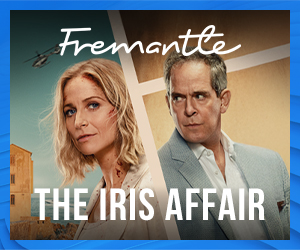Asia was Netflixed in the first week of 2016. Southeast Asia is going to be iflixed in a much bigger way from about now with US$45 million from Europe’s Sky plus US$5 million from Indonesia’s Emtek Group (iflix hasn’t confirmed the size of the Indonesian investment). Hong Kong, Singapore, Malaysia and India have been Viu’d, and there’s more to come from powerful telco PCCW as it spreads the love and the most powerful slate of first-run Korean drama/variety streaming rights ever gathered under one brand in the history of, well, the short-history of OTT in Asia. There’s Hooq, the regional venture between Singapore’s Singtel, Sony and Warner Bros. Amazon is spreading its video wings beyond Japan, although not to Southeast Asia yet. Rumours that Fox is on the brink of something big in the region have been around since 2014, except now they may really be.
Plus every market has myriad players that have launched or are launching domestic OTT services, leveraging their own IP where they can; aggregating, curating and creating audience experiences as if their livesdepended on it (which it probably does). And then there’s Malaysia’s Astro, which many expect to go bigger and bolder and soon in the space than they have been. Telcos have taken Netflix and iflix into their fold, bundling it with broadband specials, using theillusion of free as a business strategy.
In their ways, they’re all trying to drink some of whatNetflix drinks. Being more bold. Trying to be innovative. Thinking creatively about how to get around technical issues preventing them from doing everything they want to and the things they know they need to. Talking about truly-deeply-madly knowing their customers in a waythey never have before.
Here’s the thing though. Netflix is simple, and emulating that iscomplicated for old players in a new space. Netflix’s customer service is seriously to die for. Its interface is (compared to much else we’re seeing) a thing of beauty. It’s easy to buy into and so easy to use it brings a tear to the eye for all the years wasted grappling with, well, to put it nicely, pay-TV services that aren’t so easy to use. Paymentis simpl...
Asia was Netflixed in the first week of 2016. Southeast Asia is going to be iflixed in a much bigger way from about now with US$45 million from Europe’s Sky plus US$5 million from Indonesia’s Emtek Group (iflix hasn’t confirmed the size of the Indonesian investment). Hong Kong, Singapore, Malaysia and India have been Viu’d, and there’s more to come from powerful telco PCCW as it spreads the love and the most powerful slate of first-run Korean drama/variety streaming rights ever gathered under one brand in the history of, well, the short-history of OTT in Asia. There’s Hooq, the regional venture between Singapore’s Singtel, Sony and Warner Bros. Amazon is spreading its video wings beyond Japan, although not to Southeast Asia yet. Rumours that Fox is on the brink of something big in the region have been around since 2014, except now they may really be.
Plus every market has myriad players that have launched or are launching domestic OTT services, leveraging their own IP where they can; aggregating, curating and creating audience experiences as if their livesdepended on it (which it probably does). And then there’s Malaysia’s Astro, which many expect to go bigger and bolder and soon in the space than they have been. Telcos have taken Netflix and iflix into their fold, bundling it with broadband specials, using theillusion of free as a business strategy.
In their ways, they’re all trying to drink some of whatNetflix drinks. Being more bold. Trying to be innovative. Thinking creatively about how to get around technical issues preventing them from doing everything they want to and the things they know they need to. Talking about truly-deeply-madly knowing their customers in a waythey never have before.
Here’s the thing though. Netflix is simple, and emulating that iscomplicated for old players in a new space. Netflix’s customer service is seriously to die for. Its interface is (compared to much else we’re seeing) a thing of beauty. It’s easy to buy into and so easy to use it brings a tear to the eye for all the years wasted grappling with, well, to put it nicely, pay-TV services that aren’t so easy to use. Paymentis simple; none of this you “have to buy the set-top box” and then you “have to pay for a telephone line we know you don’t want and can see you don’t use”, and only then can you pay for the mobile video package, thank you. $70 before you blink. Netflix is less than $10 and you don’t get grey hairs and high blood pressure dealing with customer service or pressing “2”, “#”, “7”, “5”, “#”... Hair dye is expensive. So is valium.
But there could be problems brewing in Netflix’s paradise as it expands content acquisitions to match its global geographic spread. Wooing local rights holders looks like it’s not as easy as they may have thought. As Hong Kong Filmart delegates this year heard, rights holders in Asia right now can do better than sell their global content souls to Netflix. So many of them aren’t. Or rather, they’re holding out until the price is right. As eager as Netflix is not to repeat the experience of House of Cards in Asia, where RTL CBS Entertainment picked up first-run in many markets, so are Asia’s distributors determined to get full value for their top titles. And unless Netflix starts to equal – or top – the sum of the parts, rights holders are holding back. “Unless the price is very attractive, we prefer to go by district, not to sell global rights,” says Wong Jing, CEO of Hong Kong-based Chinese producer/distributor, Mega-Vision Project Workshop. What’s a fair price for a Chinese hit’s global rights? “The higher the better,” he says. How far and how high will Netflix go to make the blissed-out consumer experience truly global? Let’s see.
Published on ContentAsia's Issue One 2016, 23 March 2016





























